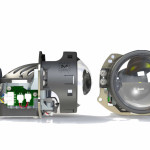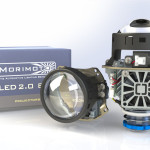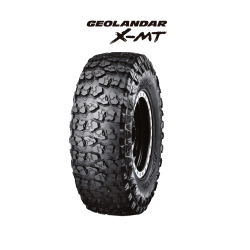
Offroading Tyre Pressure Guide – Optimize Safely
When it comes to offroading, maintaining proper tyre pressure is crucial for achieving maximum performance and safety on the trails. However, with so many external factors affecting tyre pressure, finding the optimal pressure can be challenging. In this comprehensive offroading tyre pressure guide, we provide expert advice to help you navigate different terrains with confidence and optimize your tyre pressure for a safe and efficient offroading experience.
Key Takeaways
- Proper tyre pressure is crucial for offroading safety and performance.
- Several external factors, such as terrain conditions and vehicle load, can affect tyre pressure when offroading.
- The ideal tyre pressure range for offroading depends on the terrain and vehicle, and adjustments should be made accordingly.
- Regular tyre inspections are essential for offroading safety, including tread depth and sidewall damage checks.
- Offroading experts offer invaluable insights on tyre pressure management for optimal performance and safety on the trails.
Why Tyre Pressure Matters When Offroading
When it comes to offroading, maintaining the correct tyre pressure is more than just a precaution - it is a crucial component that has a direct impact on both performance and safety.
Incorrect tyre pressure can lead to unnecessary wear and tear on your tyres, causing them to degrade faster and reduce their overall lifespan. It can also potentially cause tyre failure while travelling at high speeds or over rough terrain, jeopardising your safety and that of your fellow passengers.
On the other hand, proper tyre pressure can provide various benefits such as improved stability, better grip, and a smoother ride, enhancing your overall offroading experience. It allows your tyres to maintain the ideal shape and size for the terrain, adding an extra layer of control and safety to your driving.
Ultimately, offroading tyre pressure is a balancing act between grip, safety, and maintenance.
Factors Affecting Tyre Pressure for Offroading
When venturing off-road, the importance of optimal tyre pressure cannot be overstated. Several external factors must be considered when determining the right tyre pressure level to ensure both performance and safety. Below are some of the main factors that impact the tyre pressure for offroading:
Terrain Conditions
The type of terrain being traversed is a significant factor to consider when adjusting the tyre pressure. Different terrains have varying surface challenges, which could affect how the tyres respond. Therefore, it is necessary to adjust the tyre pressure accordingly, depending on the terrain type:
| Terrain Type | Recommended Tyre Pressure |
|---|---|
| Rocky | 12-18 psi |
| Sand | 10-18 psi |
| Mud | 18-22 psi |
| Snow | 12-14 psi |
Vehicle Load
The weight and load the vehicle is carrying will also have a significant impact on the recommended tyre pressure for offroading. Heavy loads will cause the tyres to compress more than usual and increase the risk of a blowout. Therefore, it is recommended to adjust the tyre pressure to factor in the weight of the cargo.
Temperature Changes
Temperature changes, especially during long off-road trips, can significantly impact the tyre pressure. Therefore, it is essential to monitor the tyre pressure regularly to counteract temperature-related changes.
By considering these external factors when determining the recommended tyre pressure for offroading, you can optimize your performance and safety while indulging in your off-roading adventures.
The Ideal Tyre Pressure for Offroading
When it comes to offroading, finding the correct tyre pressure is crucial to ensure optimal performance and grip. However, the ideal tyre pressure range for offroading depends on various factors, such as terrain conditions and vehicle load.
To help you discover the best tyre pressure for offroading adventures, we have put together a guide based on expert recommendations and research. Below, you can find a table outlining the recommended tyre pressures for different terrains and vehicles.
| Terrain | Vehicle Type | Recommended Tyre Pressure (psi) |
|---|---|---|
| Mud | Truck/SUV | 15-25 |
| ATV/UTV | 5-8 | |
| Sand | Truck/SUV | 12-15 |
| ATV/UTV | 4-8 | |
| Rocks | All Vehicles | 15-20 |
| Snow | Truck/SUV | 30-35 |
| ATV/UTV | 3-5 |
It's important to note that these are only recommendations and that tyre pressure for offroading may vary depending on your specific vehicle, tyre size and type, and driving style. Always check your vehicle manufacturer's recommendations and consult with a trusted offroading expert for the best results.
By following these offroading tyre pressure recommendations, you can ensure that your tyres are optimized for any terrain, providing maximum grip and improving your overall offroading experience.
Adjusting Tyre Pressure for Different Terrains
Offroading entails tackling various terrains that require specific tyre pressure adjustments. Adapting tyre pressure is necessary to maintain optimal grip, minimise wheel spin and slipping, and achieve better vehicle performance. Here are some expert tips on adjusting tyre pressure while offroading.
Mud Terrain
When navigating muddy terrain, low tyre pressure can help increase the contact patch and improve grip. Reducing tyre pressure by 15-20 pounds per square inch (PSI) from the recommended manufacturer's pressure is ideal.
Sand Terrain
Sand terrains need high tyre flotation for optimum tyre performance. Lowering the tyre pressure to 12-15 PSI can increase the tyre contact patch and provide better tyre flotation and traction. Make sure you maintain this lower level while driving on sand, but return to the recommended manufacturer's tyre pressure after venturing on this surface.
Rock Terrain
When tackling rocks, it is best to have firm tyres with minimal sidewall flex, but without being completely rigid. Keep the tyres' recommended pressure, ensuring smooth manoeuvrability and better shock absorption.
Snow Terrain
Driving on snow requires a high degree of traction, requiring tyres with lower pressure levels. Lower the tyre pressure to 6-12 PSI below the manufacturer's recommendation, depending on the depth and condition of the snow. Ensure your tyres have sufficient grip and avoid driving too fast on icy surfaces.
Adjusting your tyre pressure correctly is a vital aspect of safe and enjoyable offroading. Whether you’re a beginner or an experienced offroader, following these expert tips will enable you to tackle any terrain with optimal tyre pressure.
Offroading Tyre Pressure Monitoring Tools
When it comes to offroading, monitoring tyre pressure is crucial for optimal performance and safety. Luckily, there are various tools and technologies available to help with this task. Here are some options to consider:
Electronic Tyre Pressure Monitoring Systems
These systems provide real-time tyre pressure readings and can alert you to any changes or drops in pressure. They are widely available and can be installed on most vehicles.
Expert Tip: Electronic Tyre Pressure Monitoring Systems are an excellent investment for offroading enthusiasts as they provide reliable and accurate data without the need for manual checks.
Portable Tyre Pressure Gauges
These hand-held devices are small, compact, and easy to use. They provide quick and accurate readings and are best suited for those who prefer manual tyre pressure monitoring.
Smartphone Apps
There are several smartphone apps available that offer tyre pressure monitoring features. These apps use Bluetooth or Wi-Fi to connect to a portable pressure monitor, providing readings on the go.
Dashboard Cameras
Some modern dashboard cameras come equipped with tyre pressure monitoring features. These devices provide real-time data and alerts and can be especially useful for offroading in remote areas.
By utilizing these offroading tyre pressure monitoring tools, you can ensure that your tyres are at their optimal pressure, enhancing your offroading experience while also keeping you safe on the road.
Ensuring Offroading Tyre Safety
When venturing off the beaten path, safety should always be the top priority. Regular tyre inspections are a crucial aspect of ensuring a safe offroading experience, particularly when it comes to tyre pressure when offroading.
Tread Depth and Sidewall Damage
One of the most important factors to consider is the tread depth. Ensuring sufficient tread depth ensures traction and grip, minimizing the risk of accidents. Along with tread depth, sidewall damage checks are vital in detecting any visible damage or punctures, as these can cause significant tyre damage or even sudden blowouts.
Tyre Maintenance and Replacement
Most offroaders understand the importance of keeping their vehicles in top condition. Regular tyre maintenance, such as rotating tyres and checking the alignment, helps maintain optimal performance and safety. However, when tyre damage or wear is beyond repair, it’s essential to replace them immediately.
Recommended Tyre Pressure
The recommended offroading tyre pressure varies depending on factors such as vehicle weight, terrain, and tyre size. By following the recommended tyre pressure when offroading, drivers can ensure maximum performance and better fuel efficiency, as well as minimize the risk of tyre damage or blowouts due to overinflated or underinflated tyres.
“Maintaining the correct tyre pressure when offroading is vital for both safety and performance. Careful inspection and adherence to recommended pressure ranges can help you navigate offroad terrains with confidence.”
Additional Tips for Offroading Tyre Pressure
When going offroad, the proper management of tyre pressure is critical to achieve better traction, improve fuel efficiency, and, most importantly, ensure safety. In this section, we provide additional tips and tricks to help you get the most out of your offroad adventure with optimal tyre pressure management.
1. Learn to Read Your Tyres
One of the crucial things to understand as an offroader is that tyres can tell you a lot more than you might think. By observing and interpreting the wear patterns, you can adjust your tyre pressure to suit the specific terrain without relying solely on manufacturer recommendations. Typically, an even wear pattern indicates that the tyre pressure is suitable for the surface, while uneven wear may signal over or under-inflation.
2. Be Mindful of Temperature Differences
Temperature fluctuations can impact the tyre pressure, so it's essential to monitor changes when offroading. Warmer temperatures cause the tyre pressure to increase, while colder temperatures cause it to decrease. It's best to check your tyre pressure in the morning when the tyres are cold, then adjust accordingly and monitor throughout the day.
3. Use Your Vehicle's Weight to Your Advantage
The weight of your offroading vehicle can be used to your advantage when adjusting tyre pressure. For example, if you're driving on sandy terrain, lower tyre pressure can help distribute the vehicle's weight and provide better traction. Conversely, if you're driving on rocky terrain, slightly higher tyre pressure can prevent excessive tyre damage.
4. Keep a Portable Tyre Gauge on Hand
Regardless of how experienced you are, always carry a portable tyre gauge with you. Checking the tyre pressure regularly is critical, and a portable gauge can help you do so efficiently even in remote locations. It's also wise to avoid relying entirely on in-vehicle tyre pressure monitoring systems, as they may not provide accurate readings on challenging offroad terrains.
By implementing these additional tips into your offroading Tyre Pressure management strategy, you can reduce the risk of accidents, enhance your vehicle's performance, and increase your enjoyment.
Expert Advice on Offroading Tyre Pressure
When it comes to off-roading, setting the correct tyre pressure can make all the difference in your driving experience. To help you gain valuable insights, we've asked experienced offroaders to share their top recommendations on tyre pressure when tackling challenging terrains.
Expert Recommendations for Optimal Tyre Pressure
| Terrain Type | Vehicle Type | Optimal Tyre Pressure (in psi) |
|---|---|---|
| Rocky Terrain | Jeep Wrangler JK | 21-24 |
| Sand Dunes | Toyota Land Cruiser | 12-15 |
| Muddy Trails | Land Rover Discovery | 18-20 |
The above table provides a general rule of thumb for optimal tyre pressure based on different terrain types and vehicle models. However, it's important to note that tyre pressure can vary depending on factors such as tyre size, load capacity, and driving style. So, it's always recommended to adjust your tyre pressure based on your specific needs and preferences.
One common piece of advice from off-roading experts is to decrease tyre pressure by 5 psi for every mile per hour your speed exceeds 25 mph. For example, if you're driving 35 mph on a sandy beach, you should lower your tyre pressure by 10 psi.
"When it comes to tyre pressure offroad, it's all about trial and error. Adjusting tyre pressure depending on your terrain and vehicle is key to safe and comfortable offroading." - Tim Johnson, experienced off-roader
Don't be afraid to experiment with different tyre pressures to find what works best for your vehicle and driving conditions. Armed with the guidance provided in this article and the advice of experts, you will be better equipped to tackle even the most challenging offroad terrains with confidence.
Conclusion
In conclusion, maintaining the correct tyre pressure when offroading is essential for both safety and performance. As we've explored in this guide, the optimal tyre pressure range varies depending on factors such as terrain conditions and vehicle load. By following our recommendations and adjusting tyre pressure accordingly, you can significantly enhance your offroading experience.
Regular tyre inspections, maintenance, and timely replacements are crucial for ensuring offroading tyre safety. Additionally, investing in tools such as electronic tyre pressure monitoring systems or portable gauges can help you keep track of tyre pressure levels on the go.
Remember, safety always comes first when offroading. By adhering to the guidance provided in this article and gaining insights from offroading experts, you can confidently tackle challenging terrains with optimized tyre pressure.
Thank you for reading our offroading tyre pressure guide. We hope that the information and tips provided in this guide will help you prepare for your next off-road adventure. Happy offroading!
FAQ
Why is tyre pressure important when offroading?
Maintaining the correct tyre pressure is crucial when venturing off the beaten path. Proper tyre pressure enhances traction, improves handling, and reduces the risk of punctures and sidewall damage.
What are the factors affecting tyre pressure for offroading?
Various factors can influence tyre pressure when offroading. These include the terrain conditions, vehicle load, and the type of offroading you're undertaking. It's important to adjust tyre pressure accordingly to optimize performance and ensure safety.
What is the ideal tyre pressure for offroading?
The ideal tyre pressure for offroading often depends on the specific terrain and vehicle. Generally, a slightly lower tyre pressure than normal is recommended to increase the contact patch and improve traction. However, it's essential to consult your vehicle's manual or seek professional advice for the most accurate recommendation.
How do you adjust tyre pressure for different offroad terrains?
Different offroad terrains require specific tyre pressures to maximize performance and traction. For example, lower tyre pressure is recommended for sand to increase flotation, while higher tyre pressure is advised for rocky terrains to minimize the risk of punctures. It's crucial to research and follow expert recommendations for each terrain type.
Are there any tools available for monitoring tyre pressure when offroading?
Yes, there are various tools and technologies available for monitoring tyre pressure when offroading. Electronic tyre pressure monitoring systems (TPMS) are commonly used, providing real-time pressure readings. Portable tyre pressure gauges are also convenient for on-the-go pressure checks.
How can I ensure offroading tyre safety?
Regular tyre inspections are crucial for offroading tyre safety. Check tread depth regularly and inspect the sidewalls for any signs of damage. Additionally, proper tyre maintenance, including rotation and balancing, will help extend tyre life and ensure optimal performance. If your tyres are worn or damaged, consider replacing them before offroading.
What are some additional tips for offroading tyre pressure management?
To enhance your offroading experience through proper tyre pressure management, consider the following tips: 1. Start with recommended manufacturer guidelines. 2. Experiment with different pressures for specific terrains. 3. Carry a portable tyre inflator for adjustments on the go. 4. Avoid excessive speed to minimize the risk of heat buildup in underinflated tyres. 5. Regularly inspect and maintain your tyres to ensure proper functionality.
Do you have any expert advice on offroading tyre pressure?
Offroading experts recommend learning from their experiences and insights. Each terrain and vehicle combination may have unique considerations. Engage with the offroading community and seek advice from experienced enthusiasts, offroad clubs, and specialised forums to gather valuable insights that suit your specific offroading needs.














































































-1000x1000w-150x150.jpg)
-1000x1000w-150x150.jpg)



-250x250.png)

Leave a comment